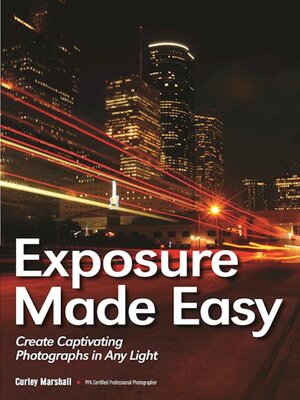Exposure Made Easy
ebook ∣ Use Exposure to Create Captivating Images in Any Light
By Curley Marshall

Sign up to save your library
With an OverDrive account, you can save your favorite libraries for at-a-glance information about availability. Find out more about OverDrive accounts.
Find this title in Libby, the library reading app by OverDrive.



Search for a digital library with this title
Title found at these libraries:
| Library Name | Distance |
|---|---|
| Loading... |
Photographers must adjust their aperture, shutter speed, and ISO (collectively, exposure settings) to produce an image that is not too light (overexposed) or too dark (underexposed). With a proper exposure, there is a full range of tones from light to dark, detail in the highlights and shadows, and good image color. Exposure settings can also be used for creative effect — using a fast shutter speed can freeze motion, while using a slow shutter speed can produce an artistic blur. A wide aperture (large lens opening) is used to limit the image area, from front to back, that appears sharp (this can make the subject stand out); a narrow aperture (small opening) is used to record everything the lens “sees" as tack-sharp. With judicious use of these controls and, in some cases, the introduction of flash to bring up the light levels, photographers have the tools needed to craft powerful portraits and capture the majesty of nature.|Photographers must adjust their aperture, shutter speed, and ISO (collectively, exposure settings) to produce an image that is not too light (overexposed) or too dark (underexposed). With a proper exposure, there is a full range of tones from light to dark, detail in the highlights and shadows, and good image color. Exposure settings can also be used for creative effect — using a fast shutter speed can freeze motion, while using a slow shutter speed can produce an artistic blur. A wide aperture (large lens opening) is used to limit the image area, from front to back, that appears sharp (this can make the subject stand out); a narrow aperture (small opening) is used to record everything the lens “sees" as tack-sharp. With judicious use of these controls and, in some cases, the introduction of flash to bring up the light levels, photographers have the tools needed to craft powerful portraits and capture the majesty of nature.







